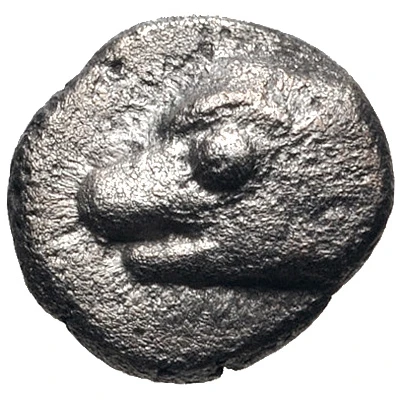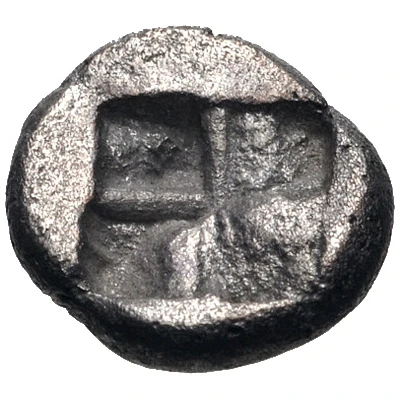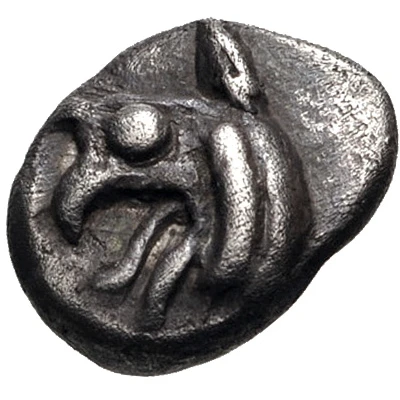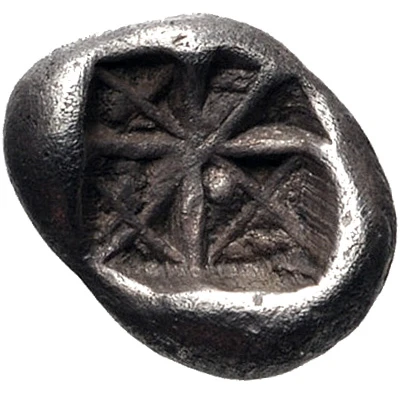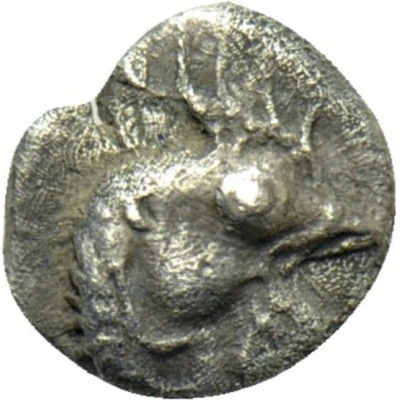
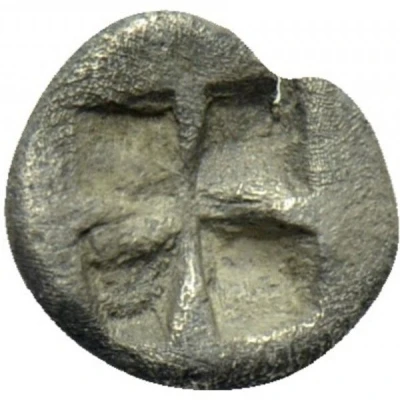

© Numismatik Naumann GmbH
Hemiobol 521 BC - 478 BC
| Silver | 0.56 g | 8.0 mm |
| Issuer | Phokaia (Ionia) |
|---|---|
| Type | Standard circulation coin |
| Years | 521 BC - 478 BC |
| Value | ½ Obol (1⁄12) |
| Currency | Drachm |
| Composition | Silver |
| Weight | 0.56 g |
| Diameter | 8.0 mm |
| Shape | Round (irregular) |
| Technique | Hammered, Incuse |
| Demonetized | Yes |
| Updated | 2024-10-10 |
| Numista | N#389412 |
|---|---|
| Rarity index | 100% |
Reverse
Quadripartite incuse square.
Interesting fact
The Hemiobol coin was used as a form of currency in ancient Greece, specifically in the city of Phokaia (Ionia) during the 6th century BC. The coin features an image of a seated goddess on one side and a quadriga (a chariot pulled by four horses) on the other. The coin was made of silver and weighed approximately 0.56 grams. Despite its small size, the Hemiobol coin played an important role in the economy of ancient Greece, as it was widely used for trade and commerce.
